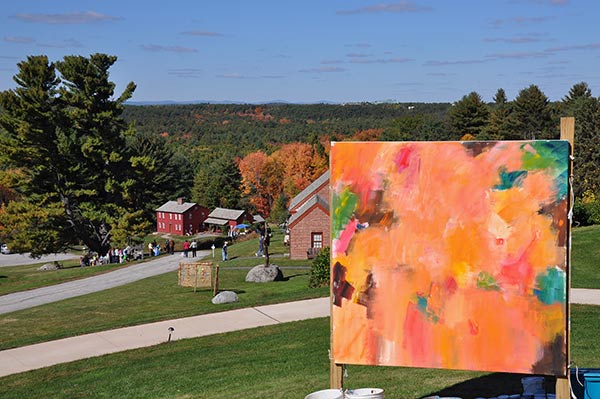Richard Kattman tells the story about how he was painting a fairly abstract piece in Italy when someone in a passing car slammed on the brakes. What did the driver say?
Lead Image: Richard Kattman working at the Fruitlands Museum in Massachusetts
“He said, ‘With all this blue and green, you are painting yellow!’” reports Kattman. “But I try not to get hung up on utilizing blue for sky or green for tree. It can be difficult to get away from color references in the landscape. However, I try to work in series. I may go through red, orange, yellow, green, and violet. I’ll say, ‘Today I’m in the violet range.’ The painting may not go that way at all, but that’s my starting point. Or, at each corner, I may put a color, maybe red, yellow, blue, and green. That may all go away, but at least I have a place to start.”
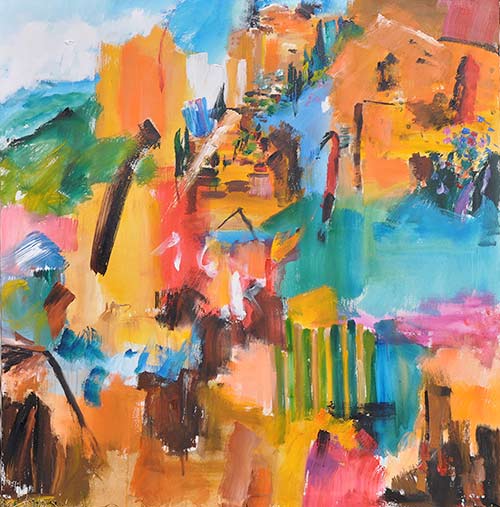
Kattman, who is also a landscape architect, views the land in an unconventional way, often considering the aerial view, noting the patterns in the landscape, rejecting the laws of perspective for the sake of imaginative manipulation. In fact, the Massachusetts artist says what’s actually in front of him is only about 50 percent of the subject matter on his canvases. “I’m looking at the landscapes that surround me, but I’m also struggling with the painting in front of me,” says Kattman. “I need to make a painting out of it, in the abstract sense. I see the sky, the trees, the rolling landscape, and the water. But I am also trying to make a coherent image on the canvas itself.”
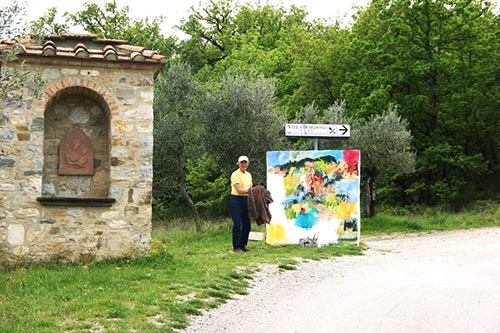
Nevertheless, working en plein air is crucial to Kattman’s process. He works large — 6’ x 6’ — and returns to a location as many as five times to complete a piece. “The landscape brings a lot to my abstract paintings,” he says. “I may be painting an entire valley, with the Fruitlands and the mountains of New Hampshire visible miles away. I’m trying to represent that on canvas. Even on my large-scale canvases, it’s hard to reduce it all. How do you do it? Paint the fore, middle, and background — it’s still just the surface of canvas. The landscape does influence me greatly, but it is just canvas and it is just paint. How do you try to put that view into a painting? I am trying to do an abstract painting. Do I let the landscape influence me completely? No. Because I am trying to create an abstract painting. It is a very difficult thing to work with.”
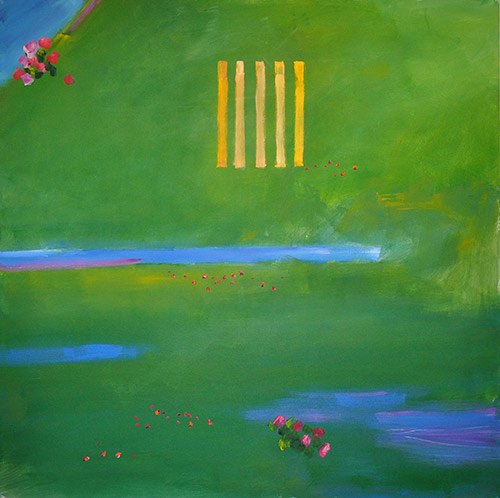
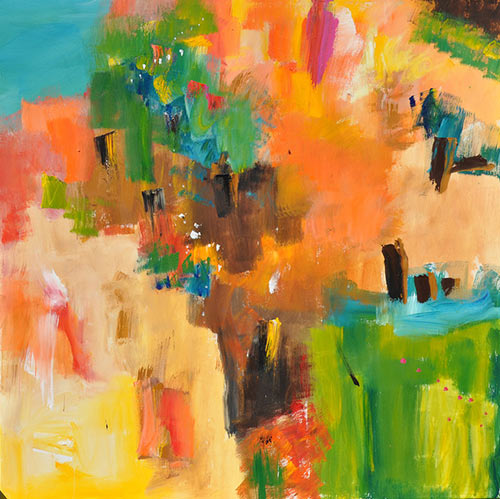
Kattman approaches this issue by selecting elements from the landscape in front of him and using them in less naturalistic ways. “In Italy, I saw little clusters of poppies that were right in front of me,” the artist recalls. “I incorporate those kinds of ideas in my paintings. Once I saw a tea rose, just one that a farmer must have planted, and I included that in my mark-making. Those things influence me a great deal.
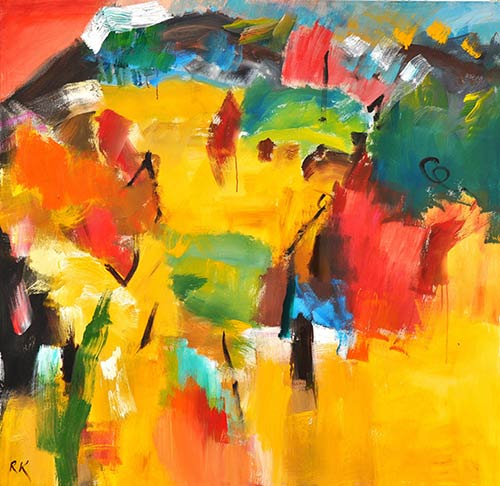
“In another image from Italy, there was a little pond right in front of me, and the color of that pond influenced me. I may see a hill town just beyond, or a mountain. Those colors will appear, but they wouldn’t be notational. A lot of the paintings that I did in Italy had a very strong yellow ochre range. That was the sunlight beating on my shoulders. But in the Fruitlands, I could see sugar maples way off in the distance and I would represent that color range. From finite detail to the infinite, from postage-stamp images to broad range, I’m trying to get the all-world feeling in my painting. It appears that I am focusing on a very small part of the landscape, but I’m really absorbing a fourth-dimension image.”
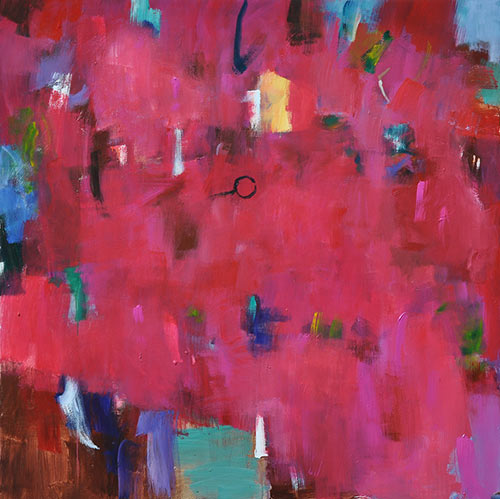
A representational painter may look at Kattman’s work and not understand his process or his vision. It is crystal clear to Kattman. “I know immediately when a painting is done,” he says. “I will know instantly when it is done. It’s when I can’t put anything more into it.”
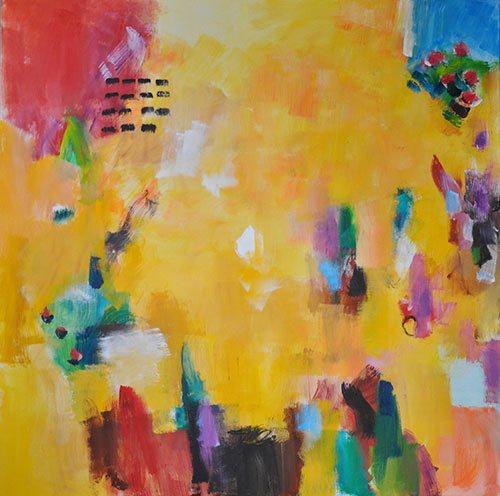
In the end, Kattman is trying to do what many plein air painters are striving to achieve. “I’m trying to make people more aware of the beauty of the landscape around them through color,” he says. “I’m also expressing myself through paint on canvas. I’m also creating abstract paintings using color in an effort to make people aware of the negative and positive things that are happening in the environment. I’m not sure everyone in the world is walking around aware of the environment around them, and the impact they have on it.”

